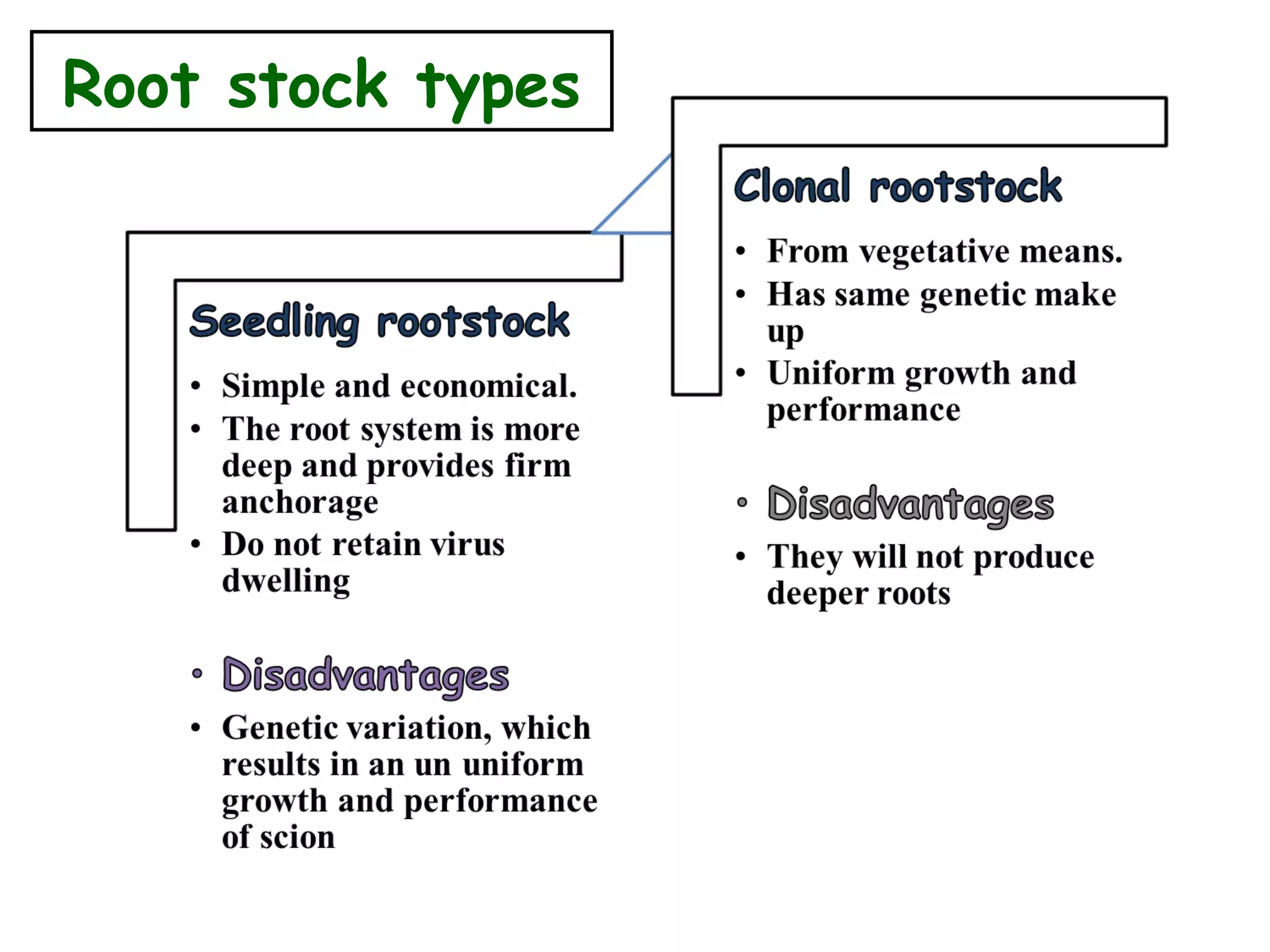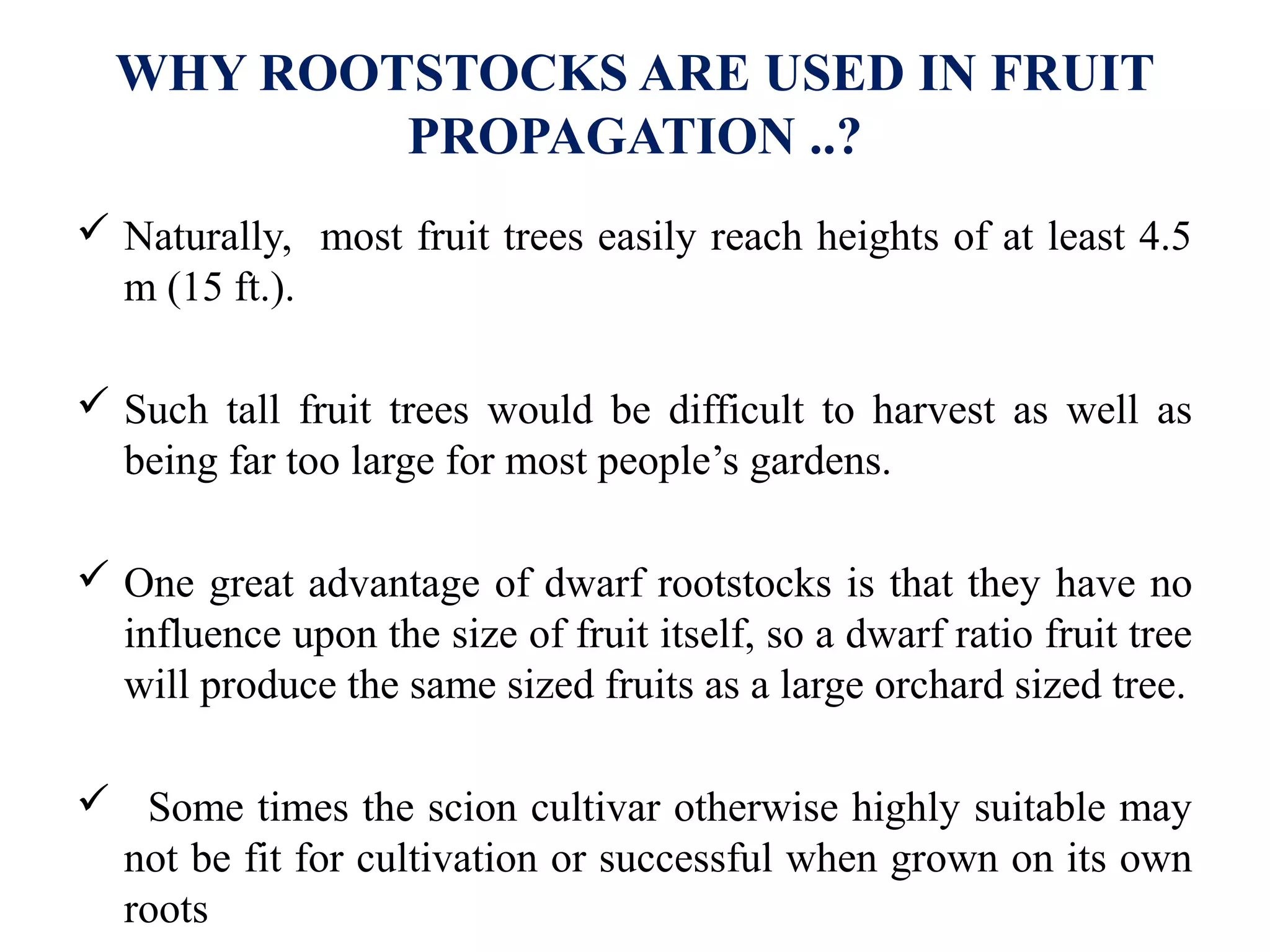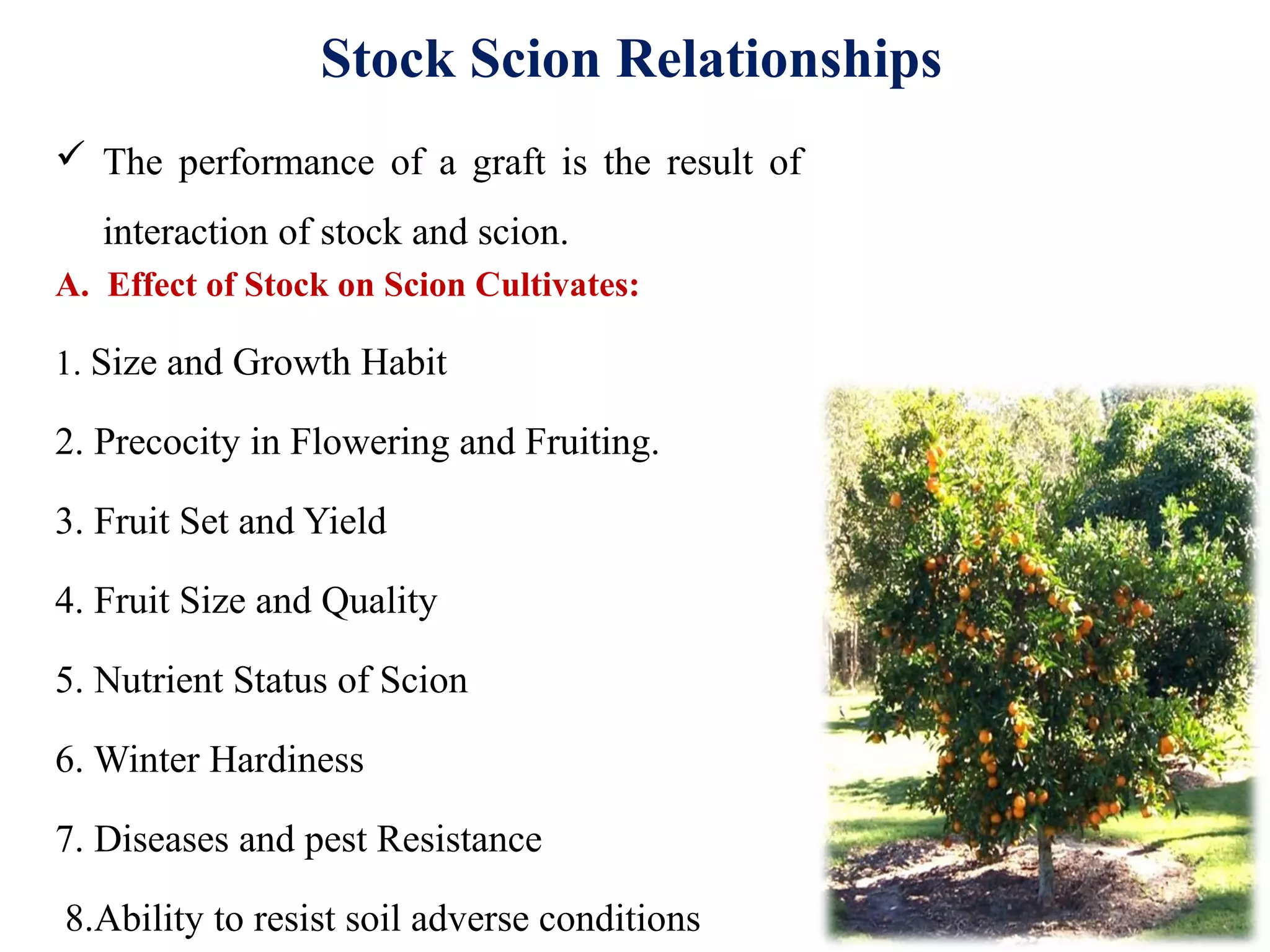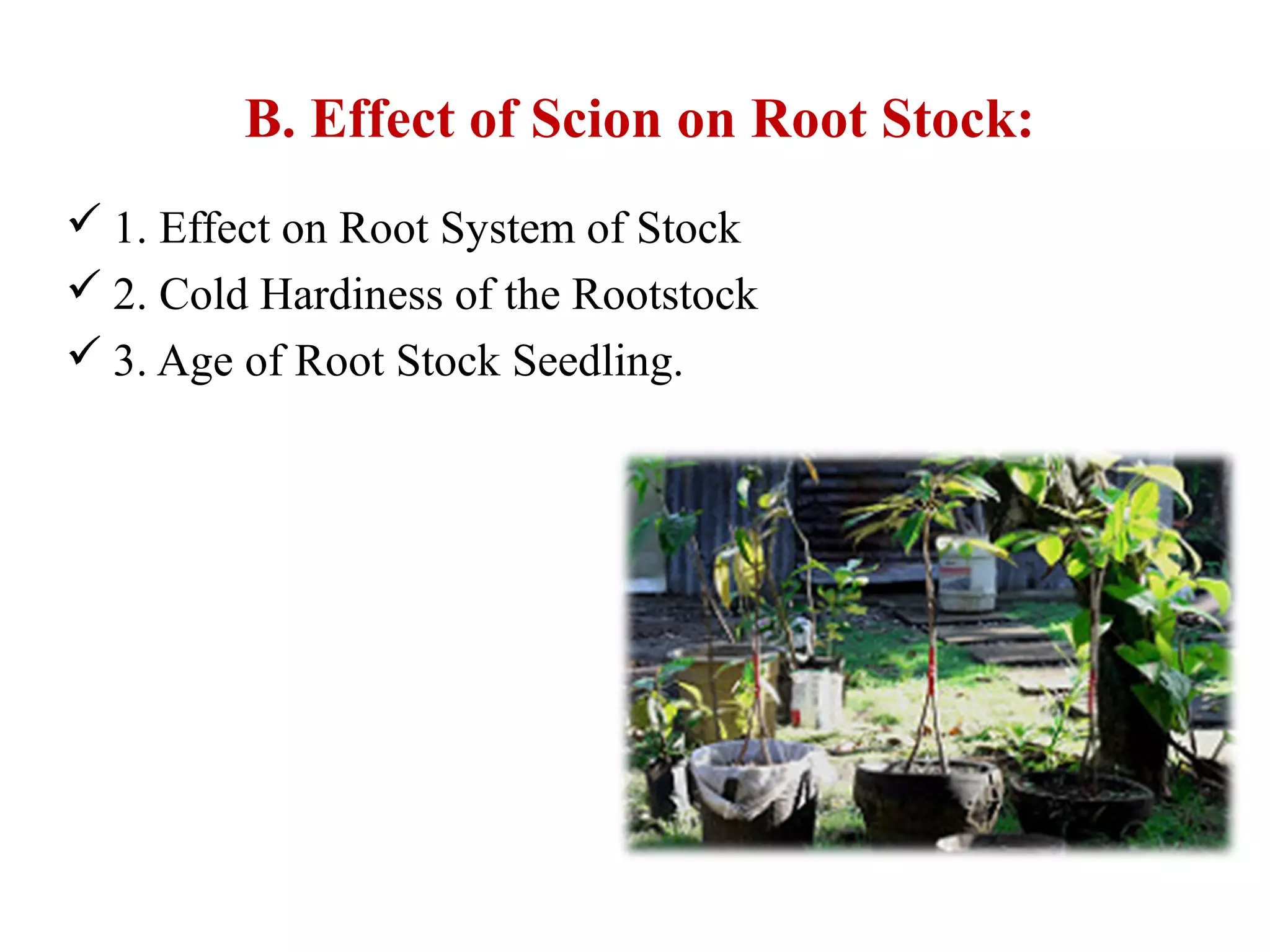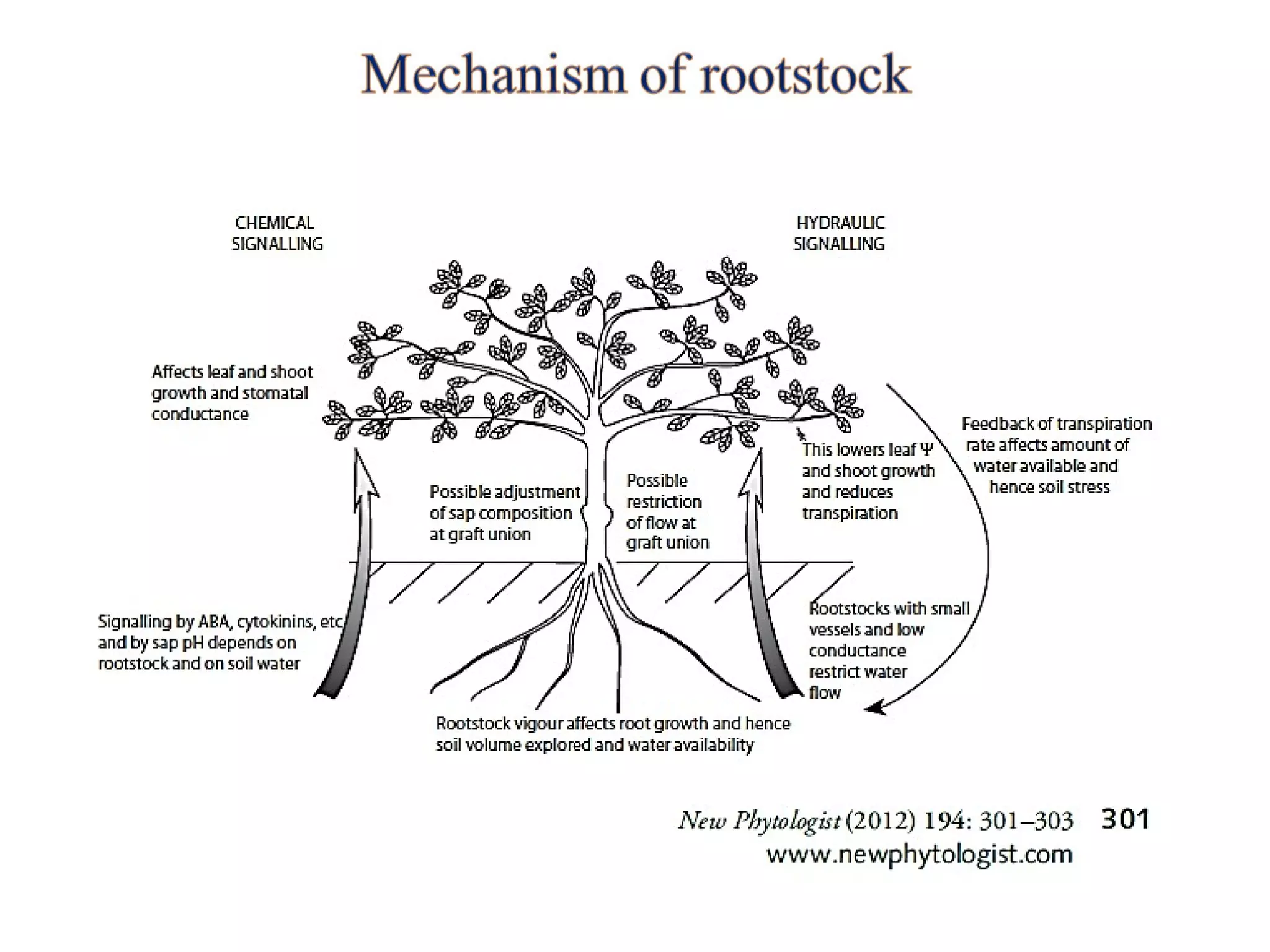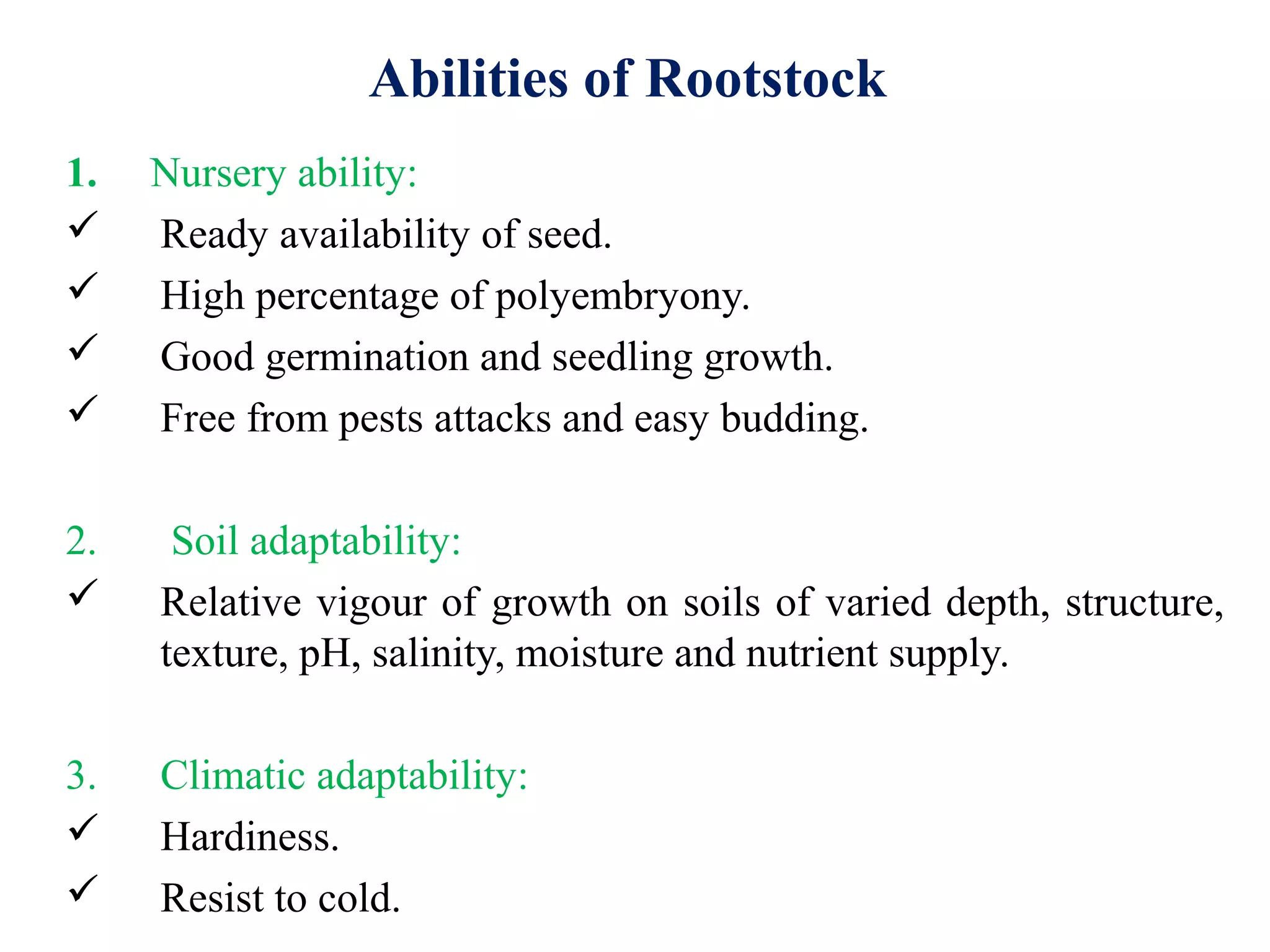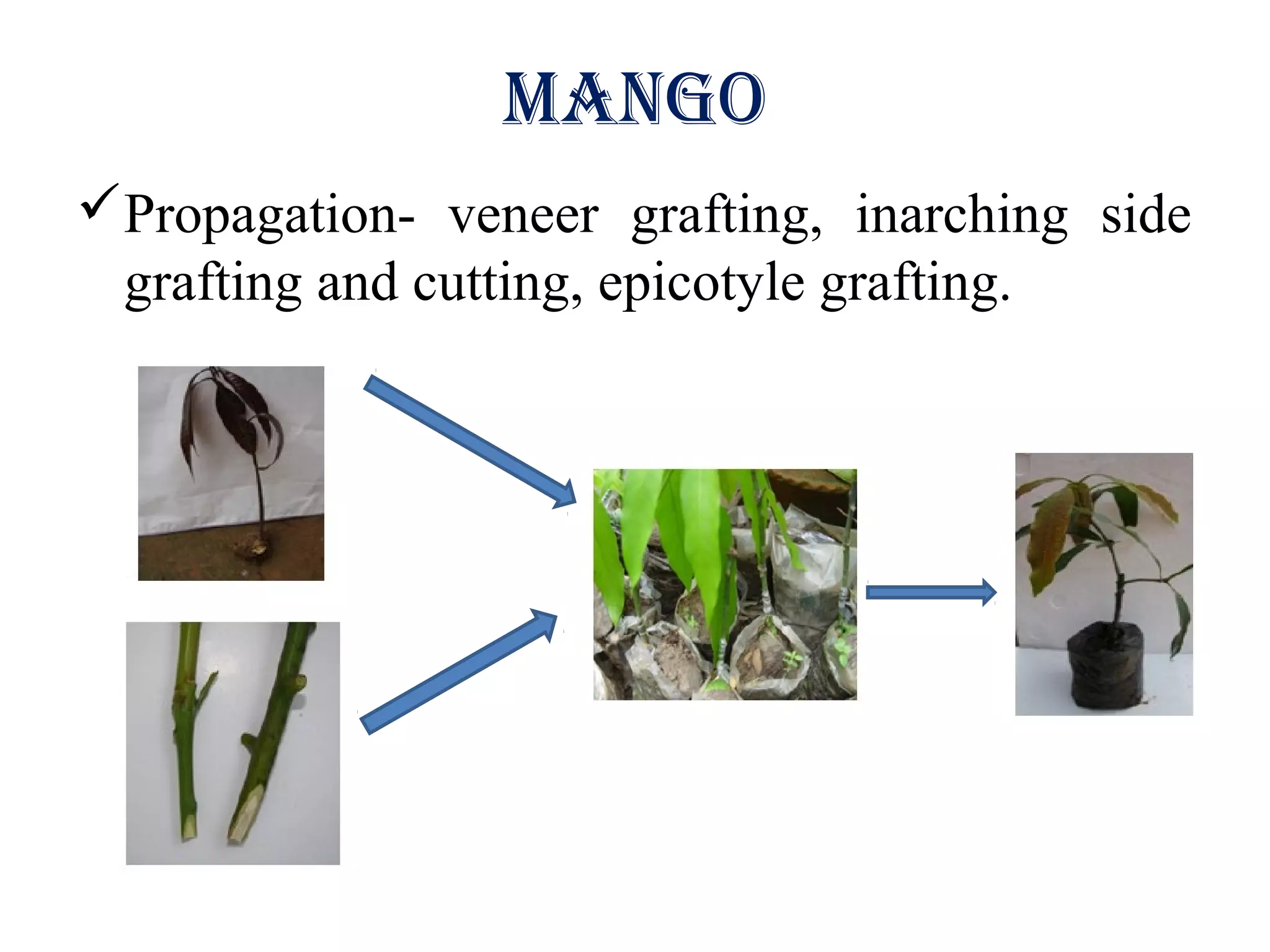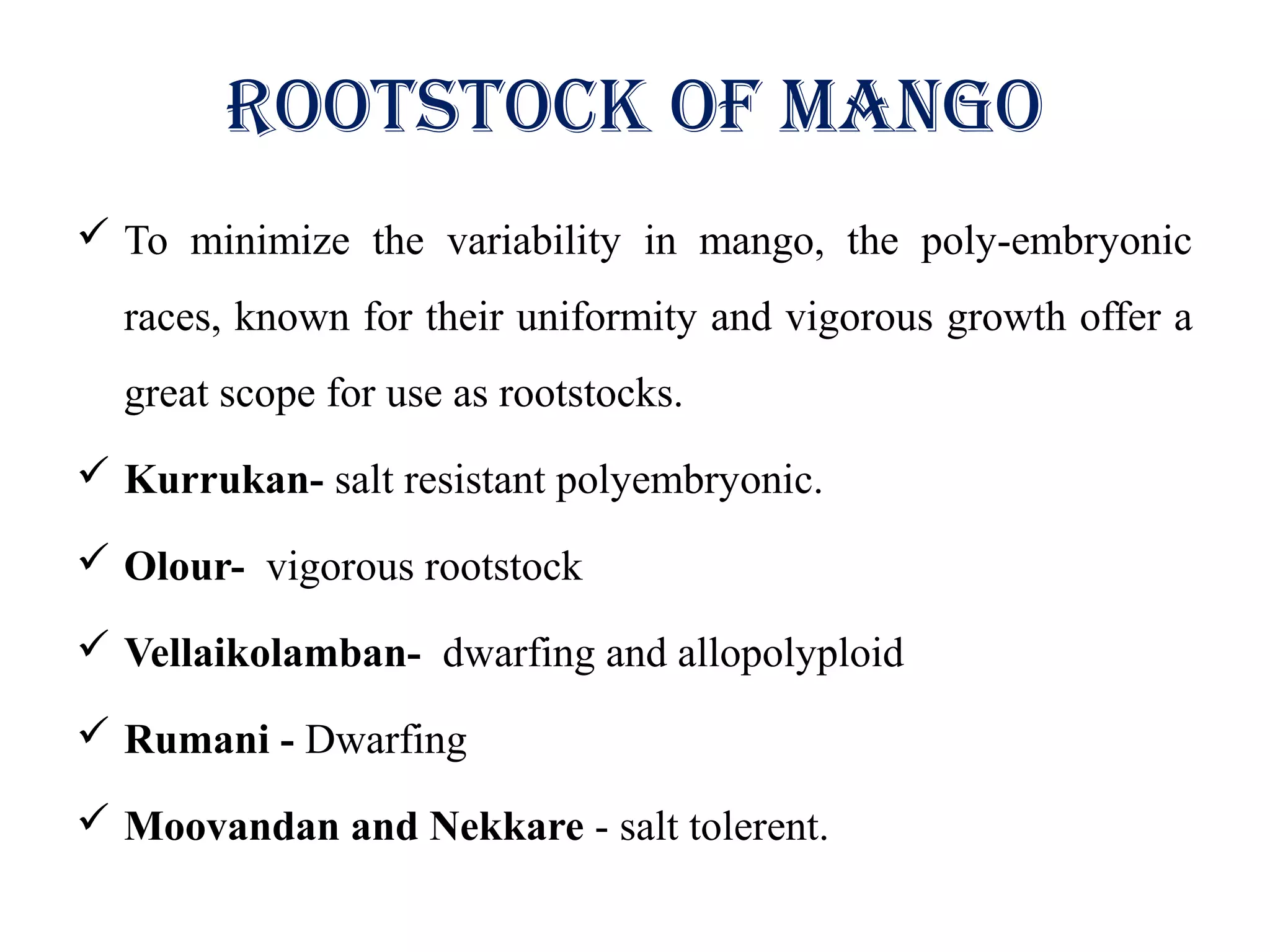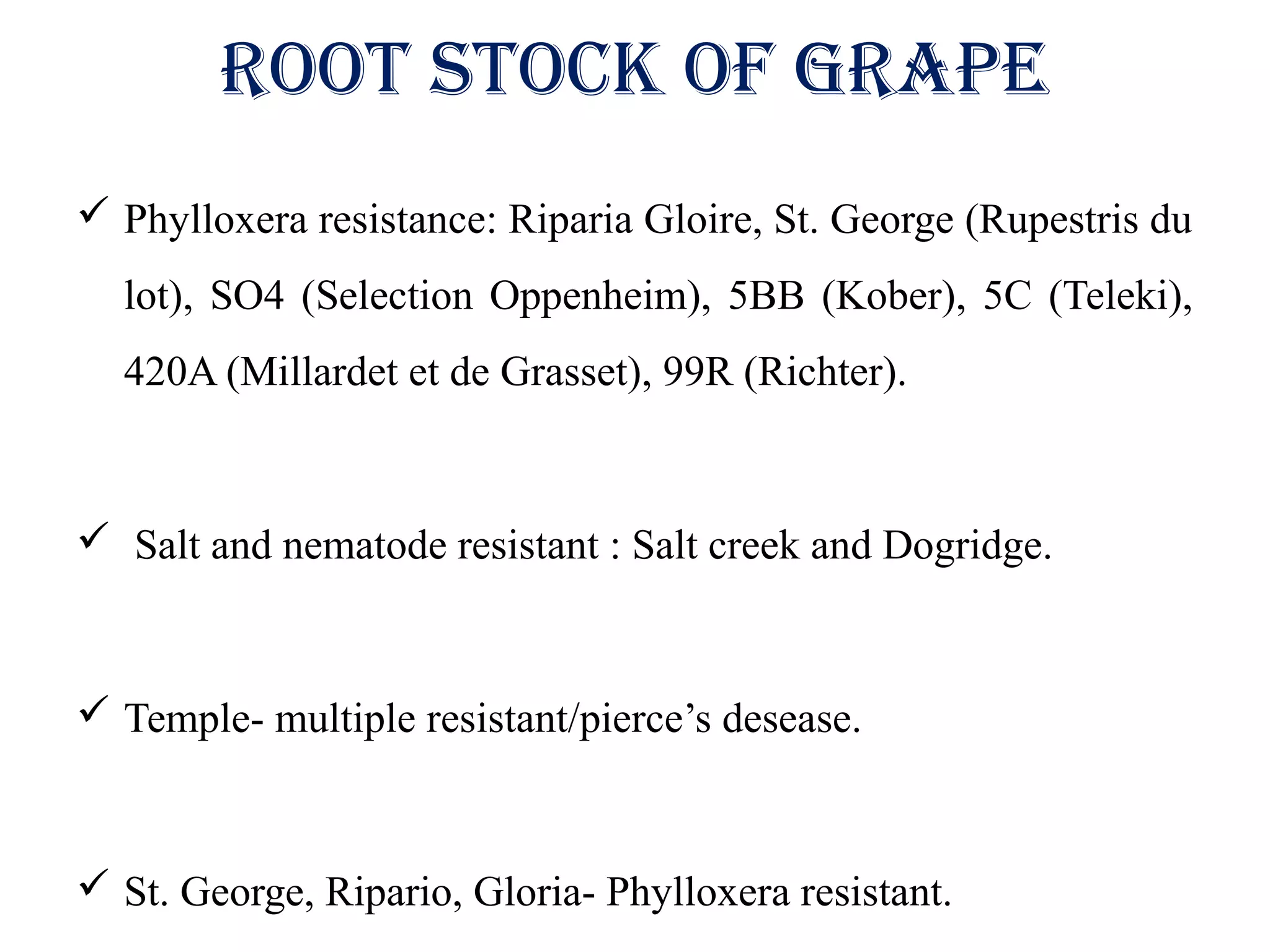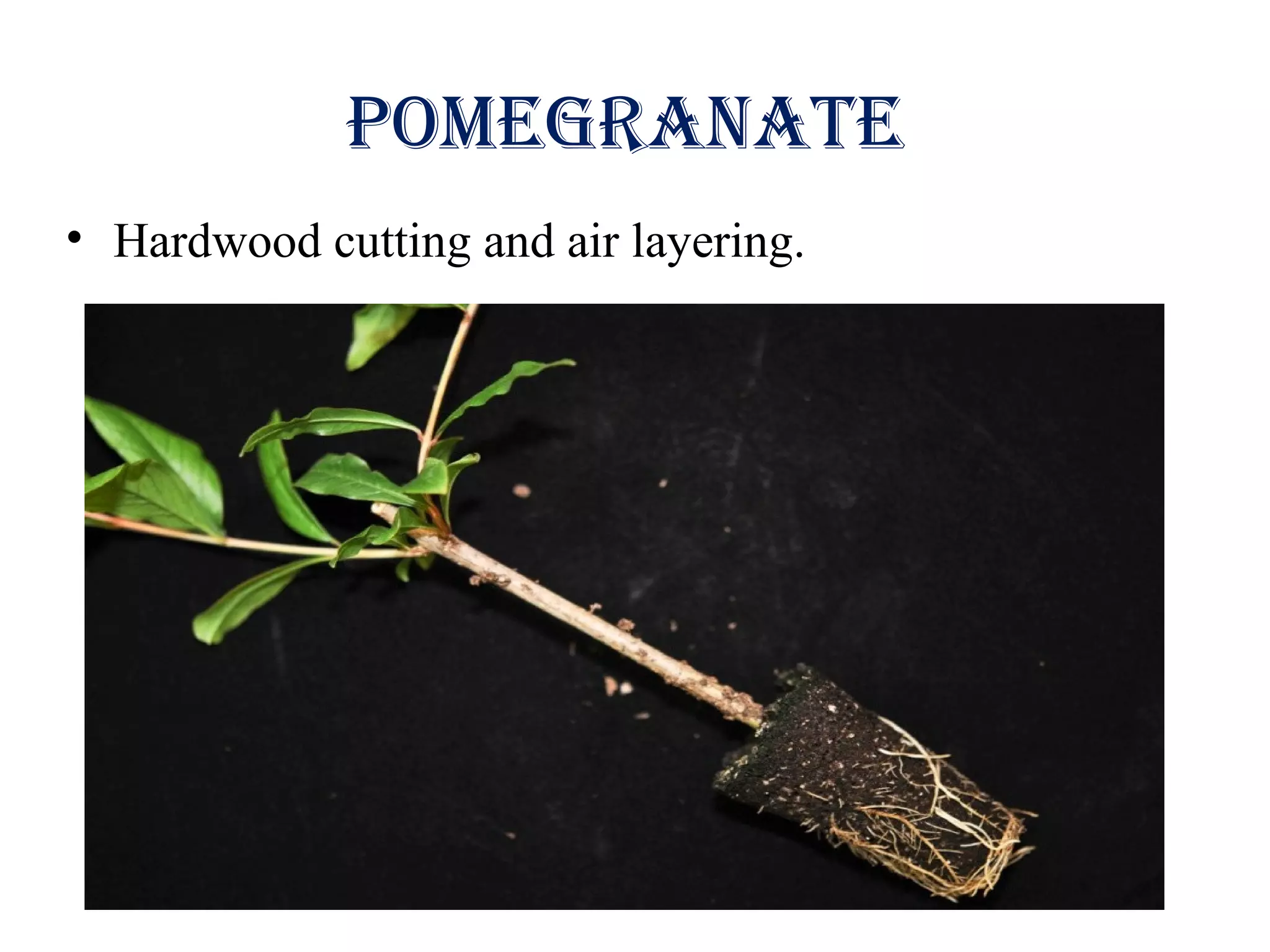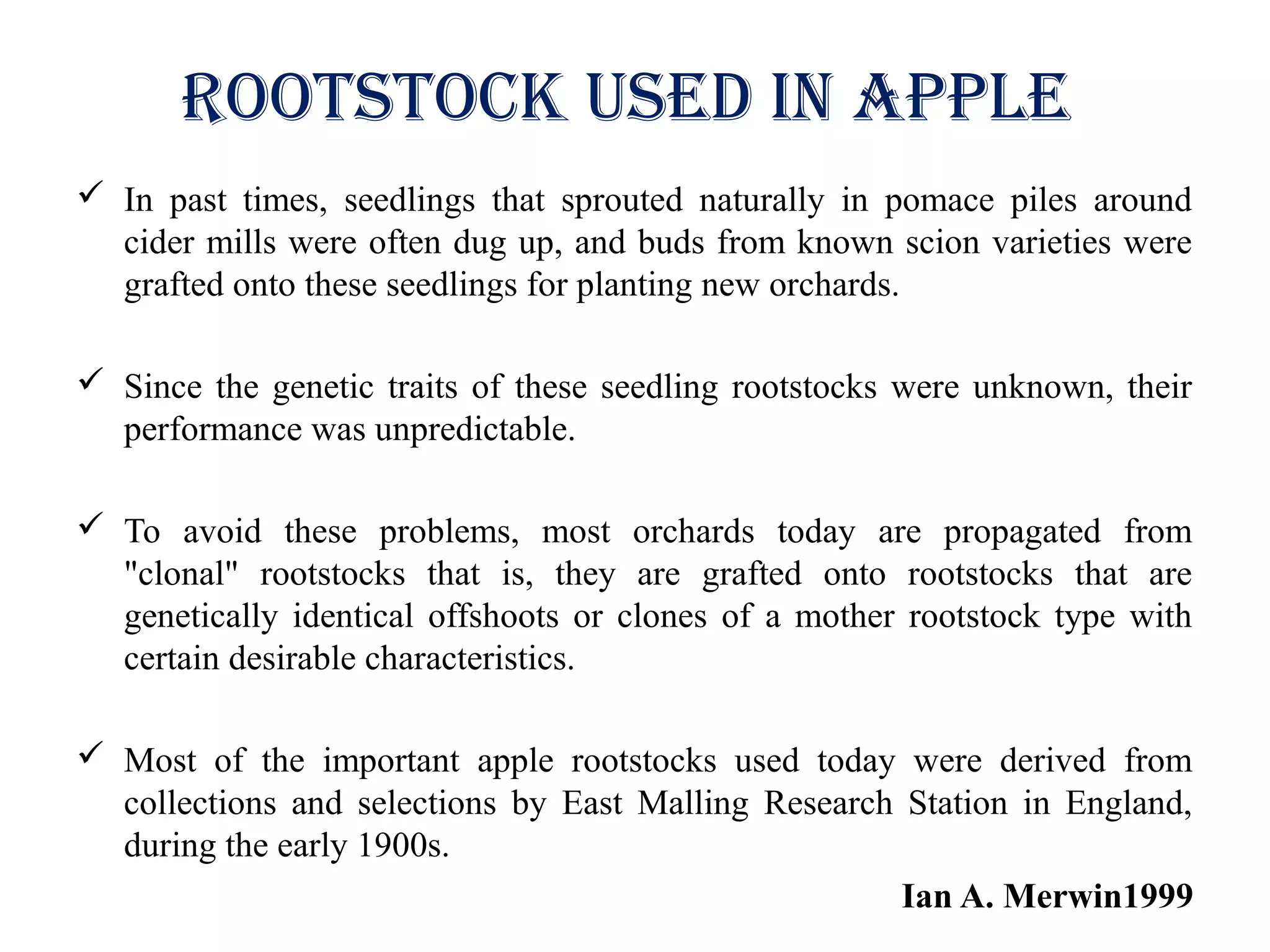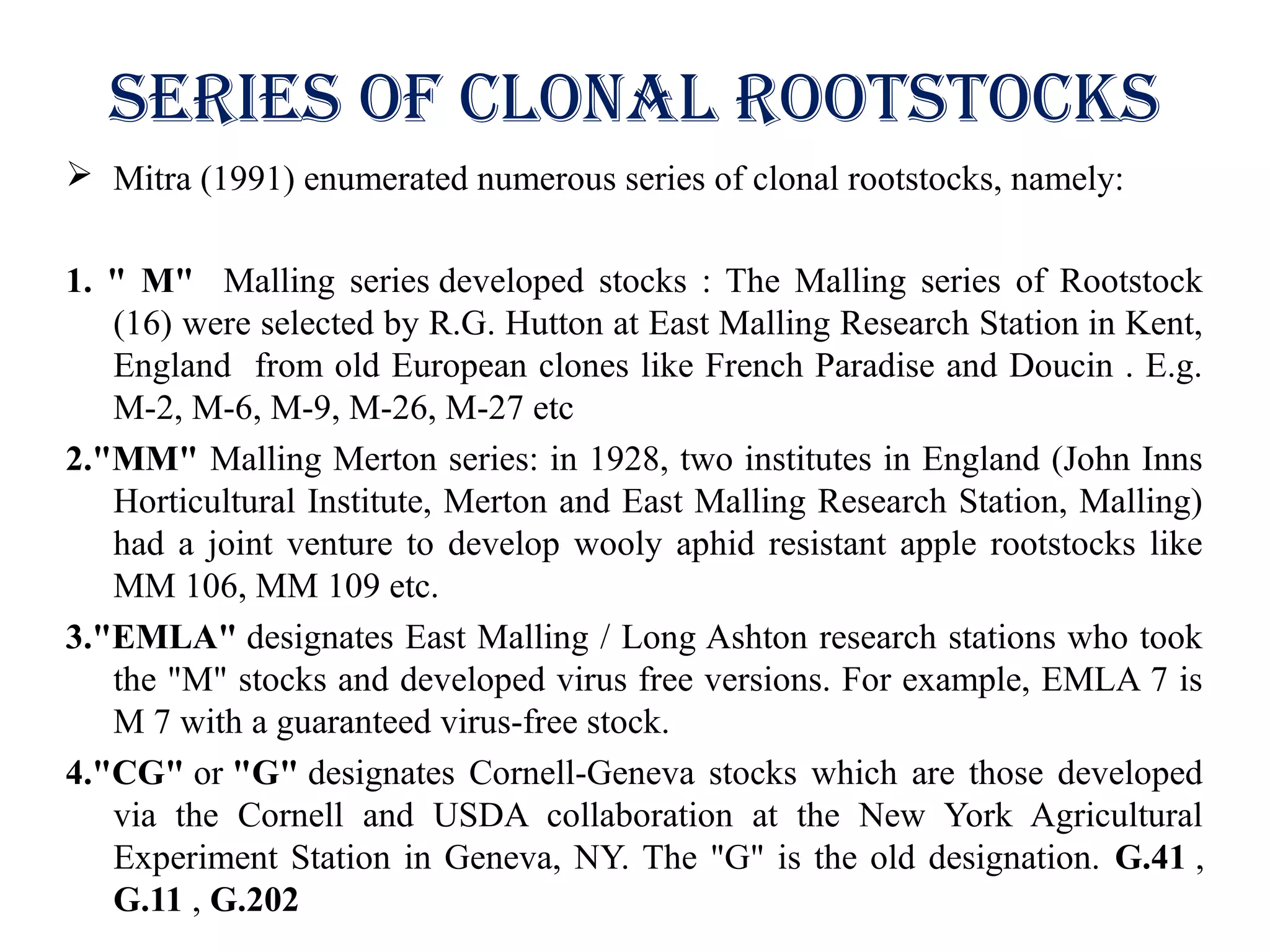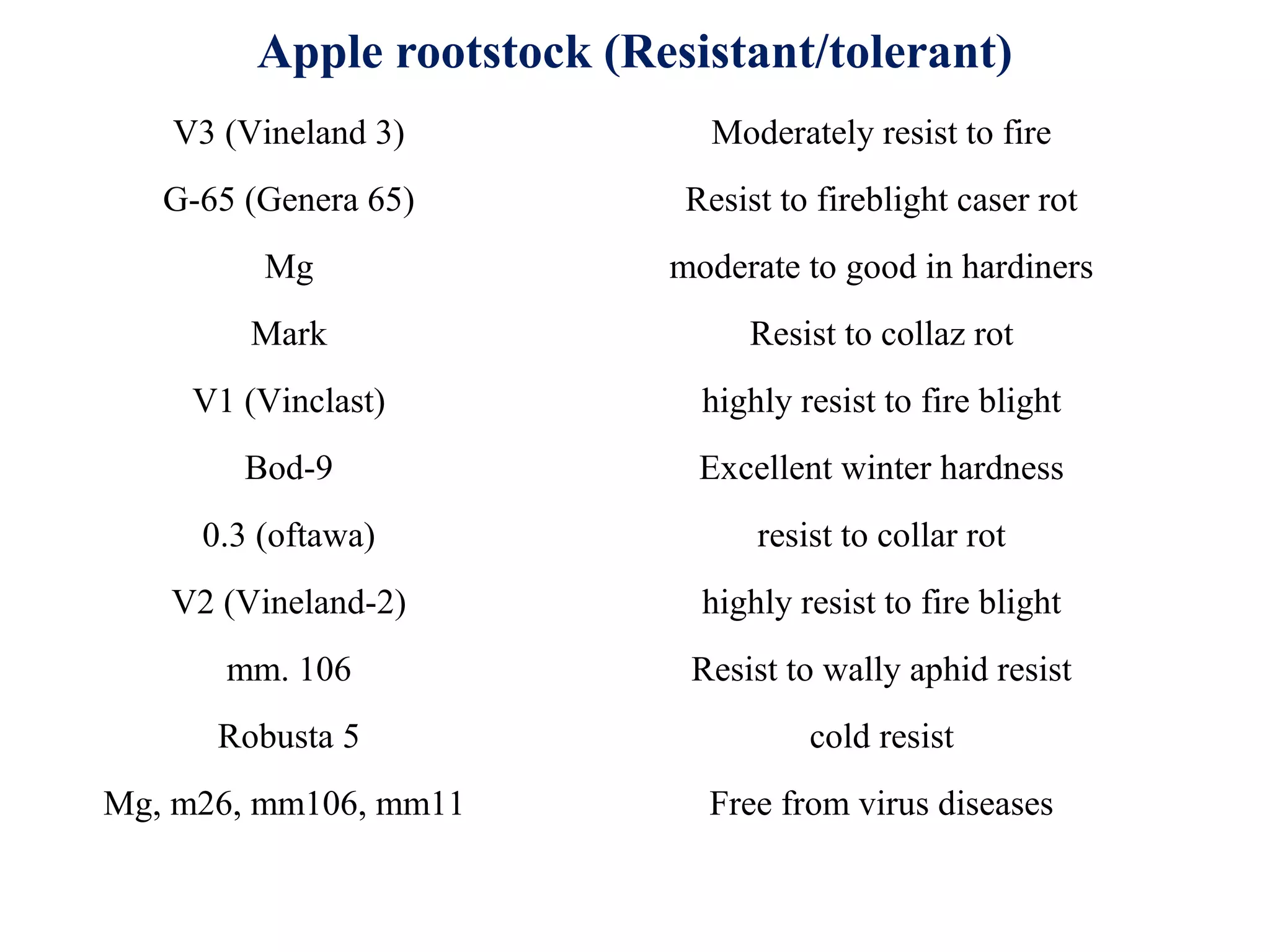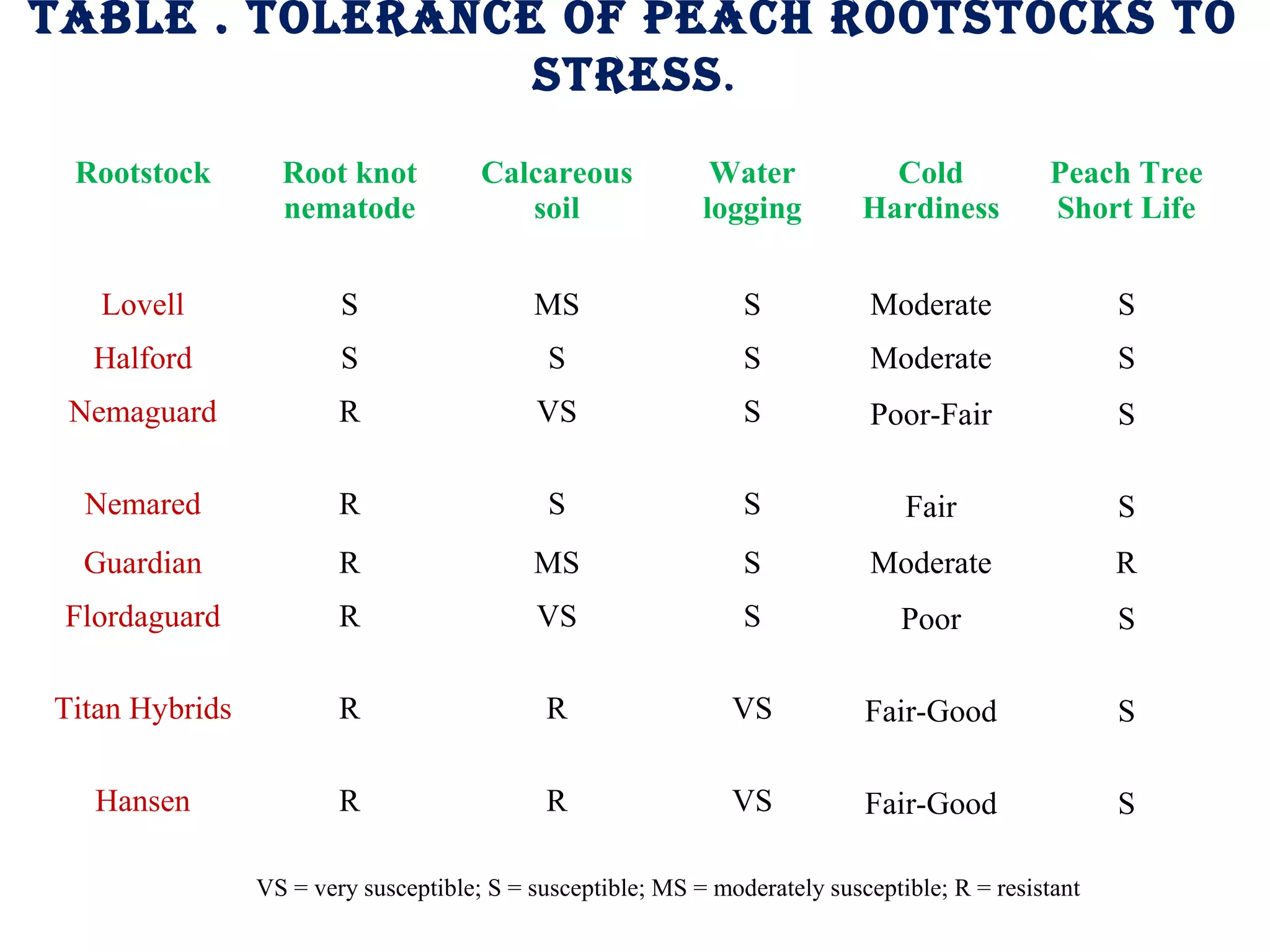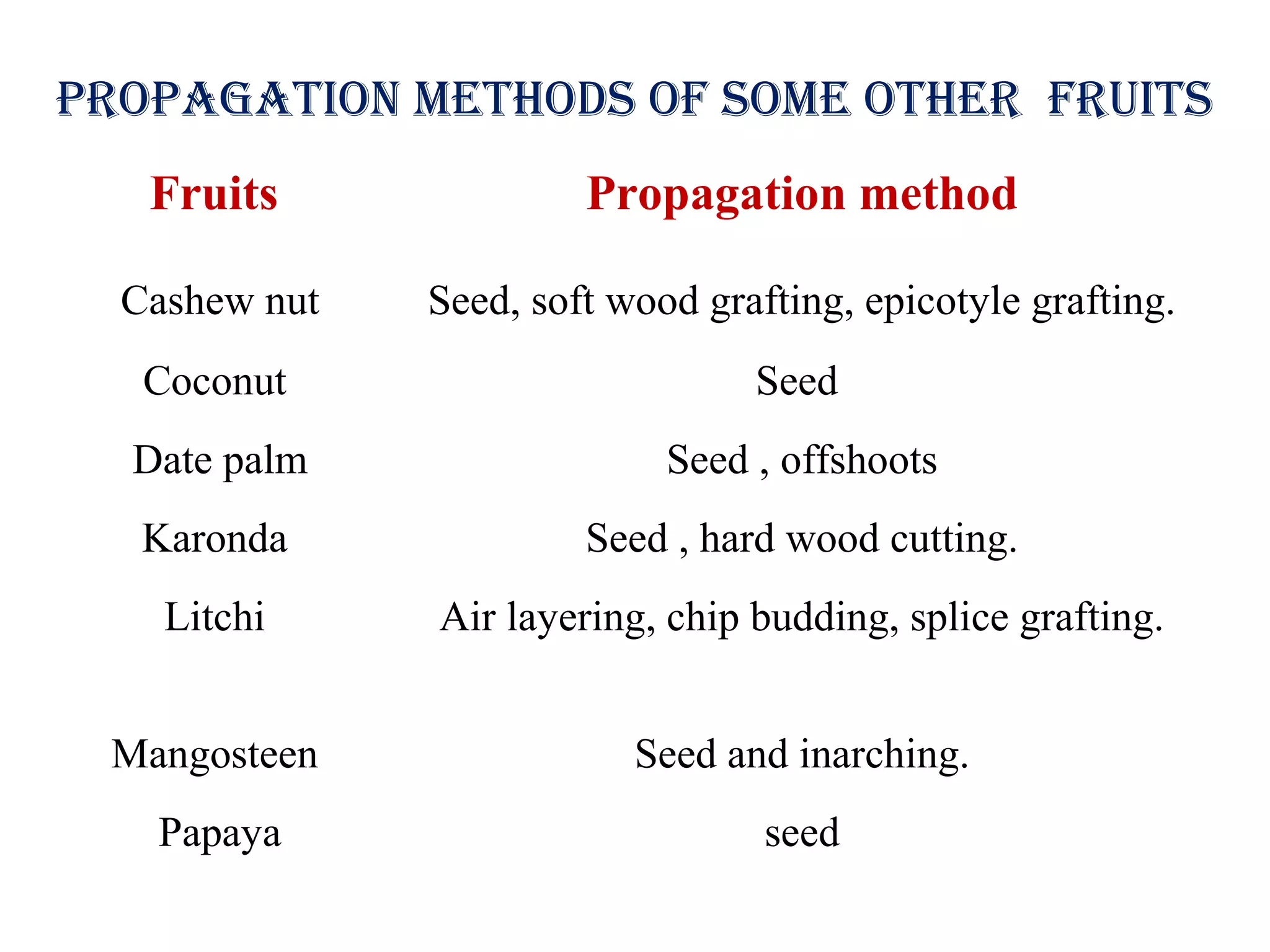Rootstocks are used in fruit tree propagation to produce stronger, quicker establishing trees that take on desirable rootstock traits. Rootstocks help control tree size, influence scion growth habits and productivity, and can impart resistance to stresses. For many fruit crops, rootstocks are important to provide adaptations to different soil and climate conditions. Common rootstock varieties are used for different fruits like mango, banana, grape, pomegranate, guava, and apple to influence tree characteristics and performance.




